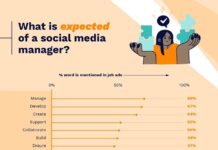In the coming months the conversation about online influence measurement will expand from a focus on user-scoring to a broader understanding of how to manage influence relative to a specific brand or conversation. Klout, PeerIndex, Kred and others are designed to score and prioritize large numbers of online users. But to identify the most significant influencers, and to get a true understanding of who’s talking about you or your market, and how you can shift the conversation, you need more sophisticated, enterprise-level tools.
One of the pioneers in this industry is Appinions, a company that is based on technology developed at Cornell University that extracts and aggregates opinions from newspaper and magazine articles, blog posts, tweets, forums and radio and television transcripts. (Another important player in this area is Traackr, which identifies influencers based on keywords; both will be included in our Guide to Influence Measurement Tools, which we will publish early in the new year.)
Search the Appinions database by topic, brand or name, and you’ll find a wealth of information about the conversations taking place. You’ll also see who the most influential voices shaping that conversation are. The tool’s algorithm scores influencers for specific topics based on preference, imitation (who is re-sharing opinions) and identifies topic originators. The scores are updated on a daily basis, and you can specify time periods so you can understand how your opinions about your brand or topic are being shaped over time.
With today’s announcement, Appinions is introducing a new feature, the influencer gap report, designed to answer the question: “Who should be talking about you–but isn’t?”
I spoke to Appinions CEO Larry Levy a couple of weeks ago, and he gave me a preview of these reports, in which he described how brands can use this feature to measure and address this gap. Here’s a screen shot that shows a sample comparison between two competing brands:
The report lets you see how many people are talking about your competitors in comparison to your brand, or measure the difference in the conversations about two competing topics, and then create strategies to close the gap over time. In this example, the volume of conversations about Pepsi Max exceeds the volume of conversations about Coke Zero. So Pepsi Max is doing well, but let’s say you want to increase your share of the conversation even more, or would like to specifically increase your presence in news reports. You can see exactly where the conversation is taking place–blogs are dominating–and then you can drill down and identify the top “influencers” who are talking about Coke Zero, but not talking about Pepsi Max.
Here’s another example the company shared, this time focused on a brand that might want to understand how to capture a larger share of the conversation in its overall market category:
The company’s goal is to create actionable metrics and a methodology that ties the concept of influencer management directly to business outcomes. Appinions CEO Larry Levy says he ultimately wants to be able to help companies to “complete the picture: for every point by which you reduce your influence gap, we want to measure a direct impact on revenue or store traffic.”
The Appinions tool, which launched in early September of this year, is available at a price of $1,000/month for up to 50 topics.
What do you think? Is the value of a tool like this great enough for brands and PR and marketing agencies to invest in Appinions to help them shape their campaigns in the next year?


